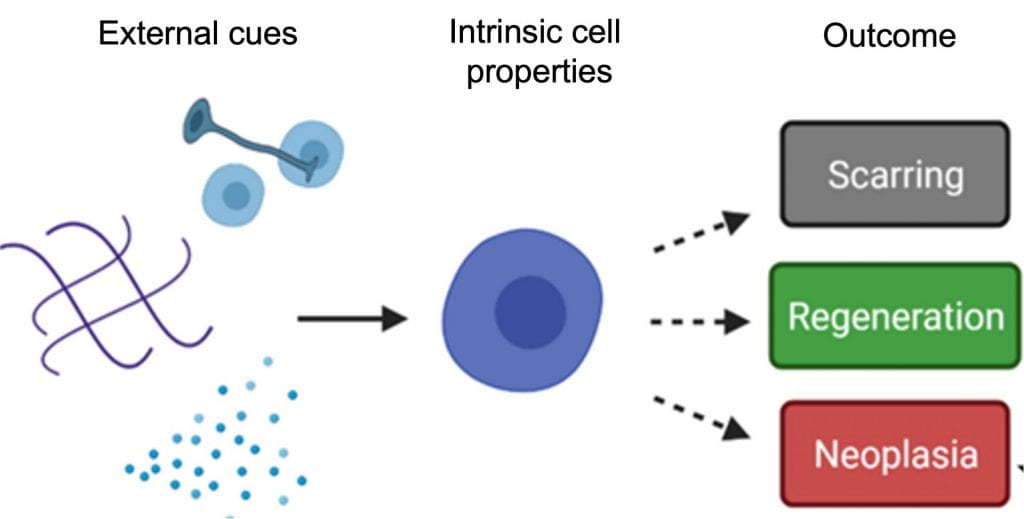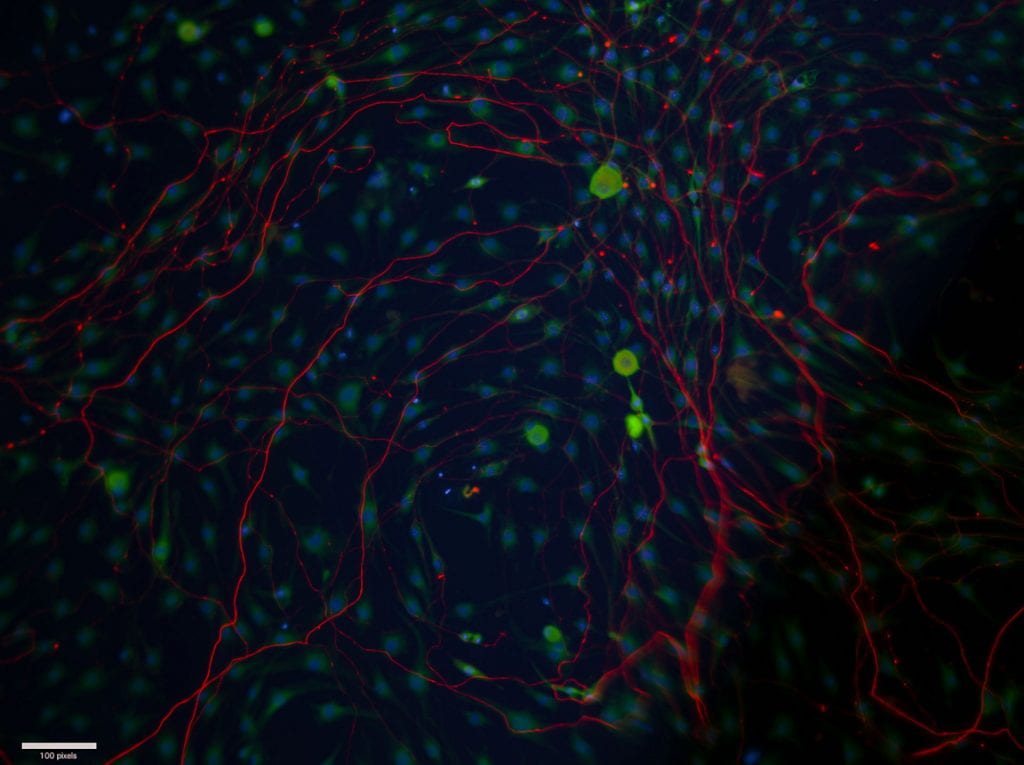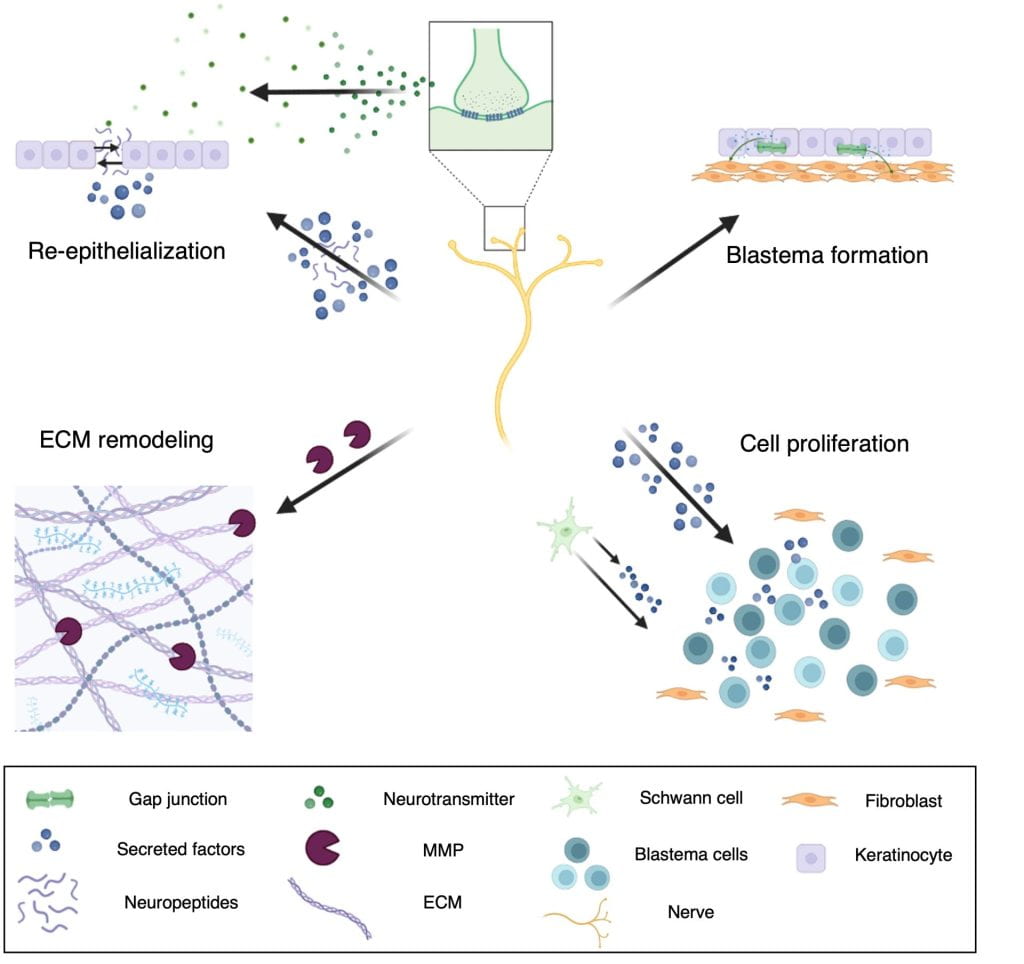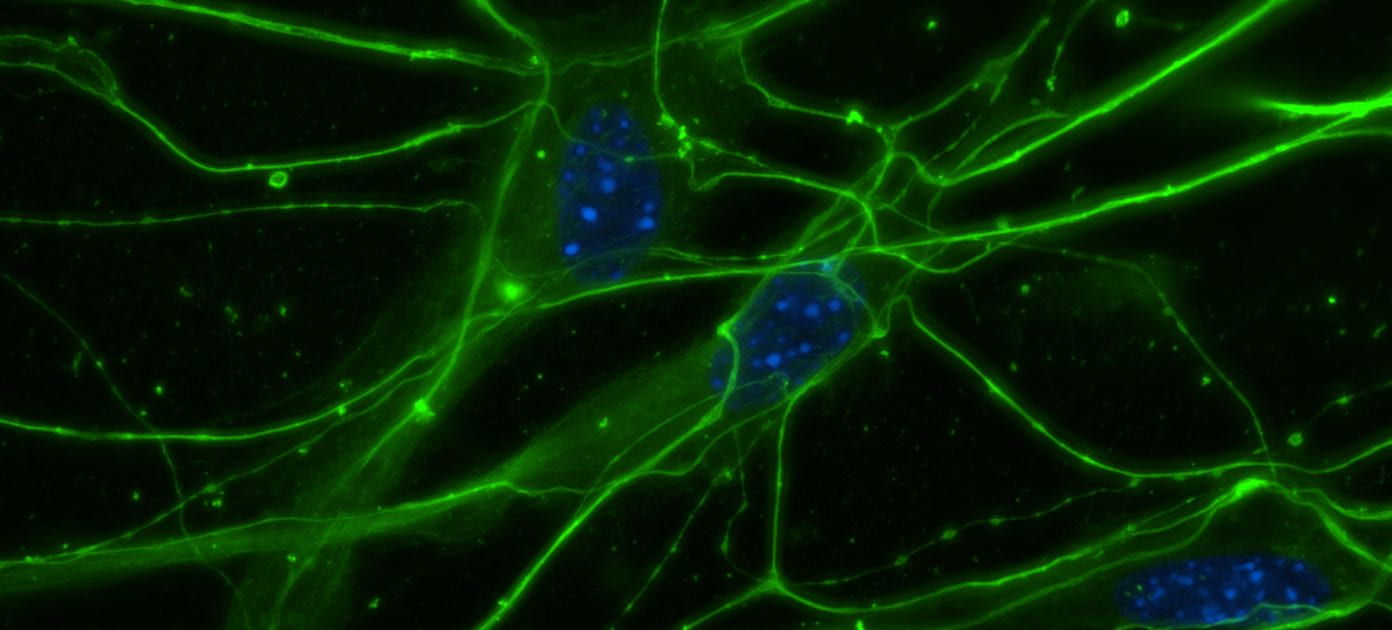Research Overview
Why can some species regenerate tissues, limbs, and even whole bodies after injury, while humans cannot?
This is the question that drives our research

We know that the behaviour of cells following an injury is controlled through a combination of external cues in the microenvironment (e.g., secreted factors, the extracellular matrix, and biophysical properties) and the intrinsic properties of the cell (e.g., protein and gene expression, membrane potential, etc). What we don’t know is which cues are the most important, and how they combine to produce different outcomes: scarring, regeneration, or cancer.
Our lab’s overarching goal is to understand the mechanisms that drive wound healing and tissue regeneration to develop therapies to promote regeneration in scar-forming systems

Nerve dependency in wound healing and regeneration
We are currently focused on how peripheral nerves – the cells that conduct electrical impulses in your body – orchestrate the response to injury and damage.

Research Areas
- In vitro modelling of nerve-cell interactions
- The role of nerves in scarring and re-epithelialization during wound healing
- The role of nerves in blastema-mediated regeneration



